Why you can trust Tom's Hardware
Comparison Products
The Team MP44L is up against the budget-oriented Inland Prime, other mid-range PCIe 4.0 SSDs including the HP FX900, the Patriot P400, the WD SN770, and the Solidigm P41 Plus, plus an old stalwart - the Sabrent Rocket NVMe 4.0. The higher-end Crucial P5 Plus is also in the mix. The P41 Plus is the only QLC drive in the list. Most of these drives, including the MP44L, are utilizing Micron’s 176-layer TLC, so we can see what difference a controller can make.
Trace Testing - 3DMark Storage Benchmark
3DMark’s Storage Benchmark focuses on real-world gaming performance. Each round in this benchmark stresses storage based on gaming activities including loading games, saving progress, installing game files, and recording gameplay video streams.
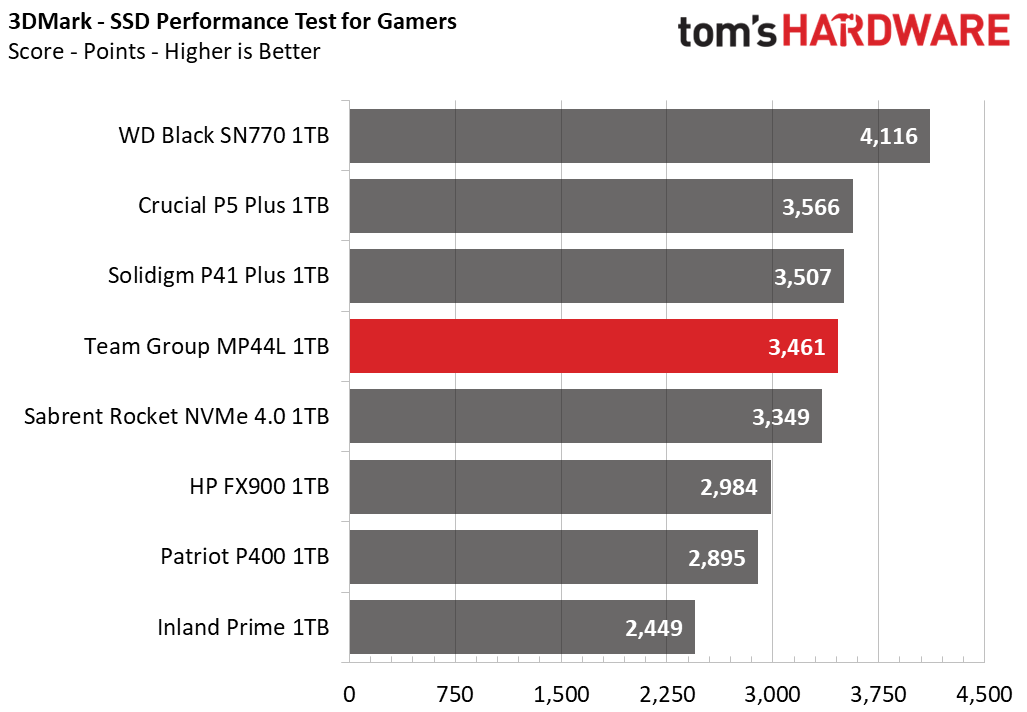
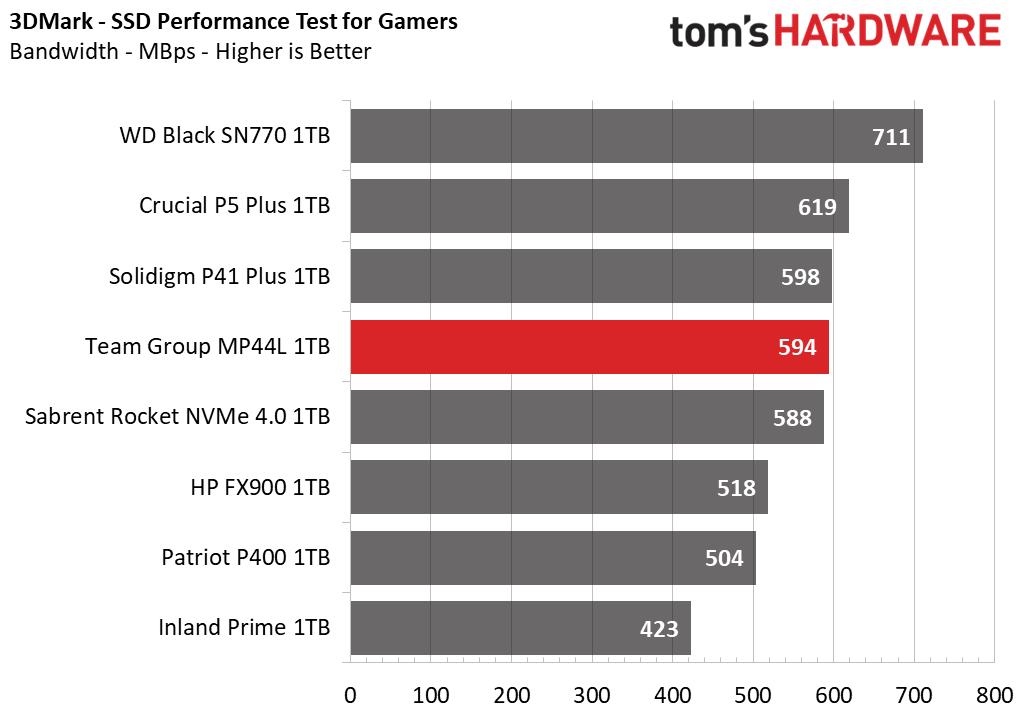
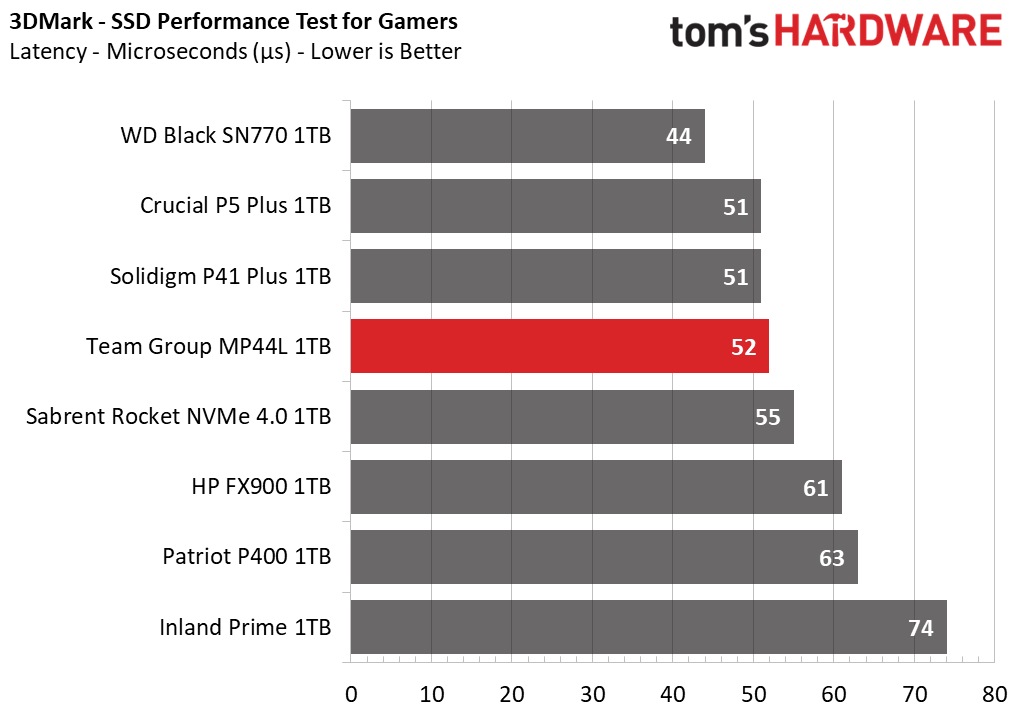
The MP44L is average to above average in 3DMark. The InnoGrit controller in the FX900 and P400 does not seem well-optimized for this benchmark. Older 28nm technology in the Inland Prime and Rocket NVMe 4.0 - the E15T and E16 controllers, respectively - also fall behind, even though the latter has DRAM. The P41 Plus does surprisingly well.
Trace Testing – PCMark 10 Storage Benchmark
PCMark 10 is a trace-based benchmark that uses a wide-ranging set of real-world traces from popular applications and everyday tasks to measure the performance of storage devices.
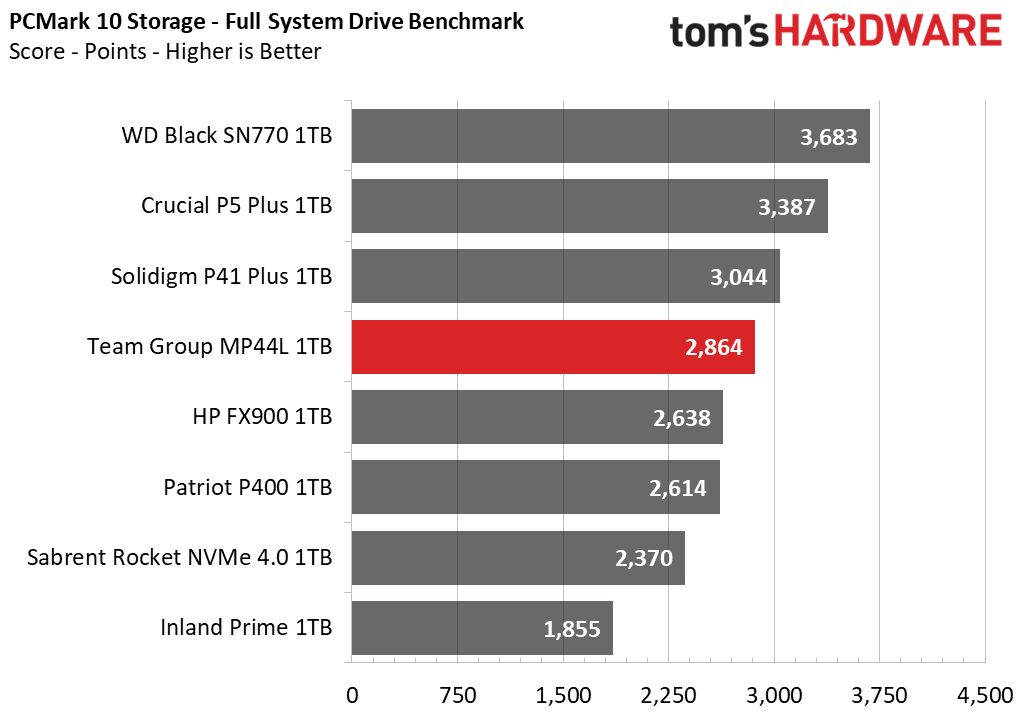
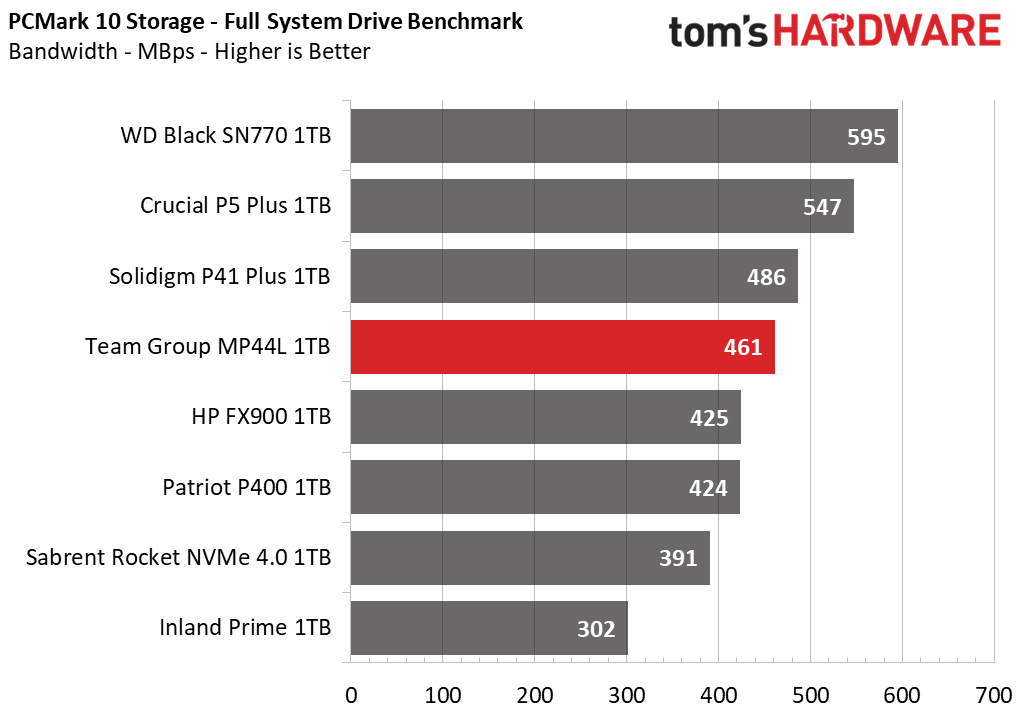
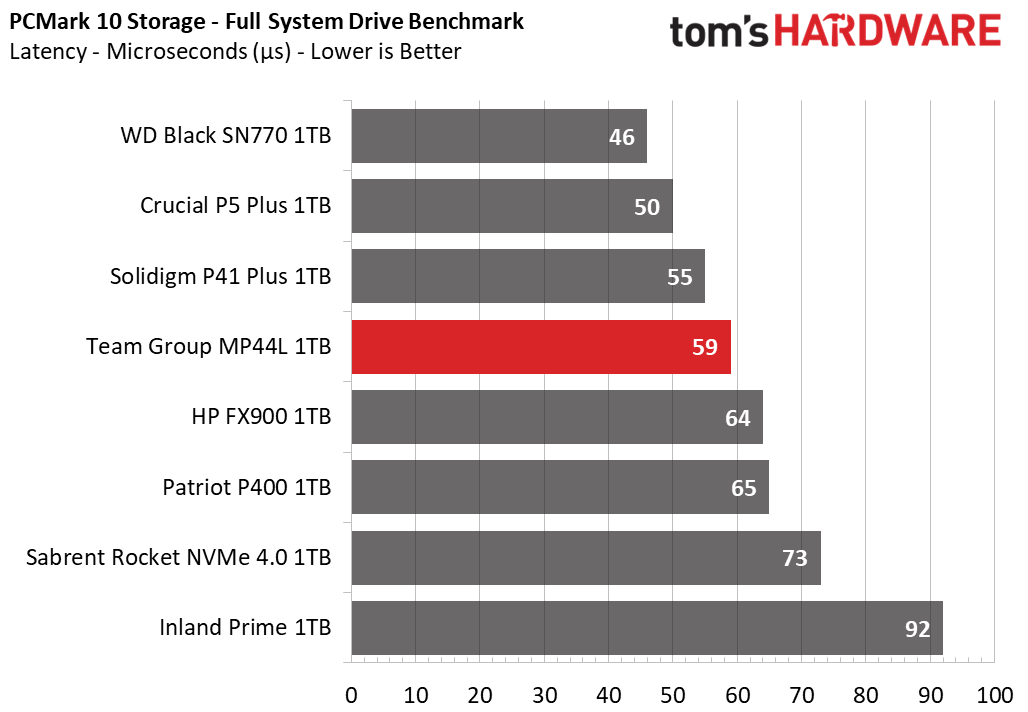
Results for PCMark 10 are similar to those for 3DMark. The MP44L is above average and the P41 Plus punches above its weight.
Transfer Rates – DiskBench
We use the DiskBench storage benchmarking tool to test file transfer performance with a custom, 50GB dataset. We copy 31,227 files of various types, such as pictures, PDFs, and videos to a new folder and then follow-up with a reading test of a newly-written 6.5GB zip file.
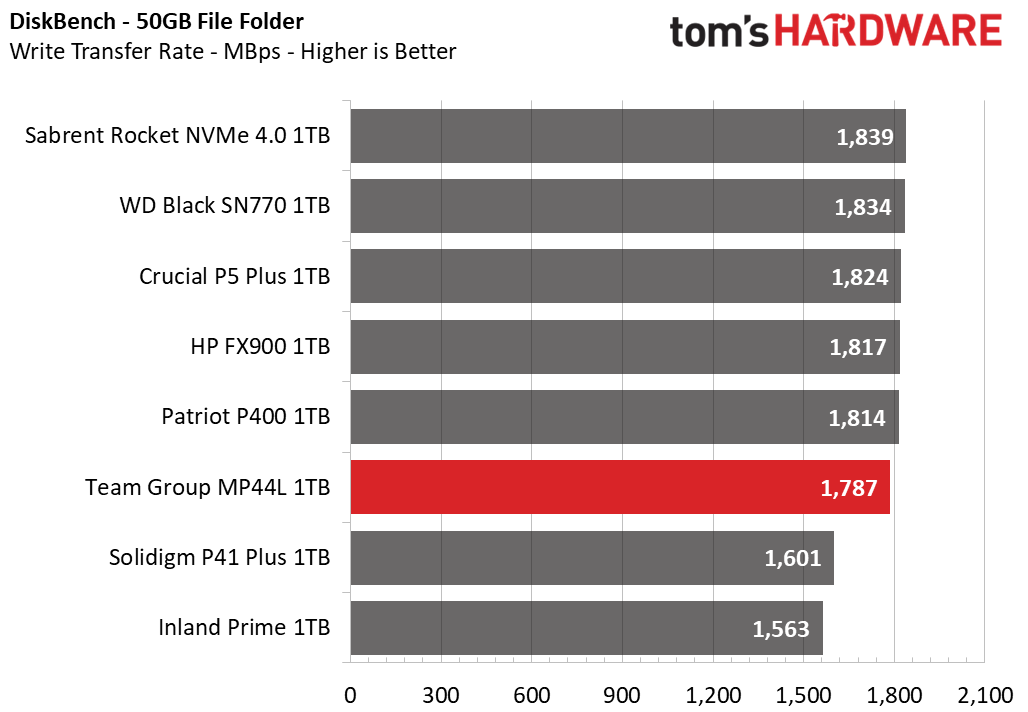
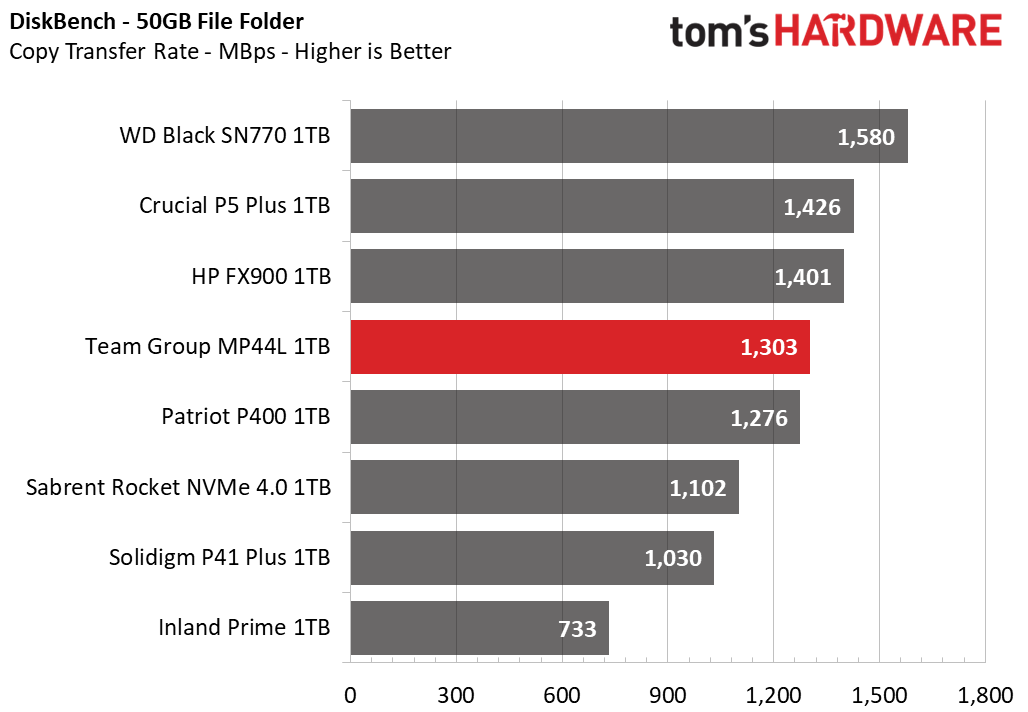
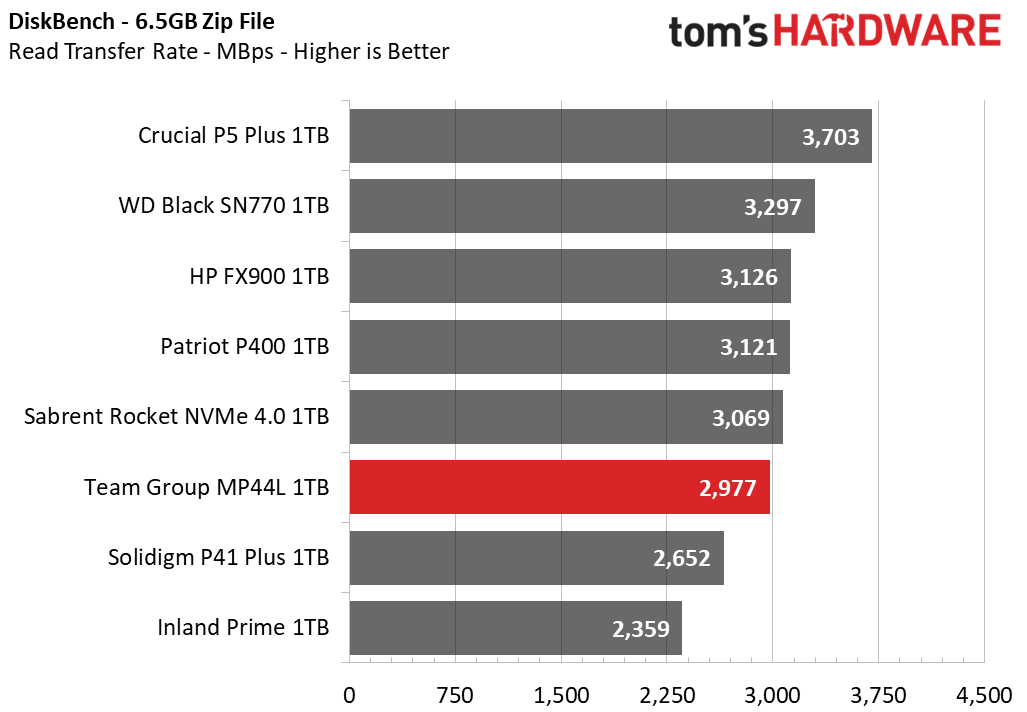
In DiskBench, we are essentially looking at the copy transfer rate to get a feel for how well the drive would copy files to itself. This takes both read and write performance into consideration. The MP44L is again a bit above average, with the P5 Plus and SN770 remaining at the top.
Synthetic Testing - ATTO / CrystalDiskMark
ATTO and CrystalDiskMark (CDM) are free and easy-to-use storage benchmarking tools that SSD vendors commonly use to assign performance specifications to their products. Both of these tools give us insight into how each device handles different file sizes.
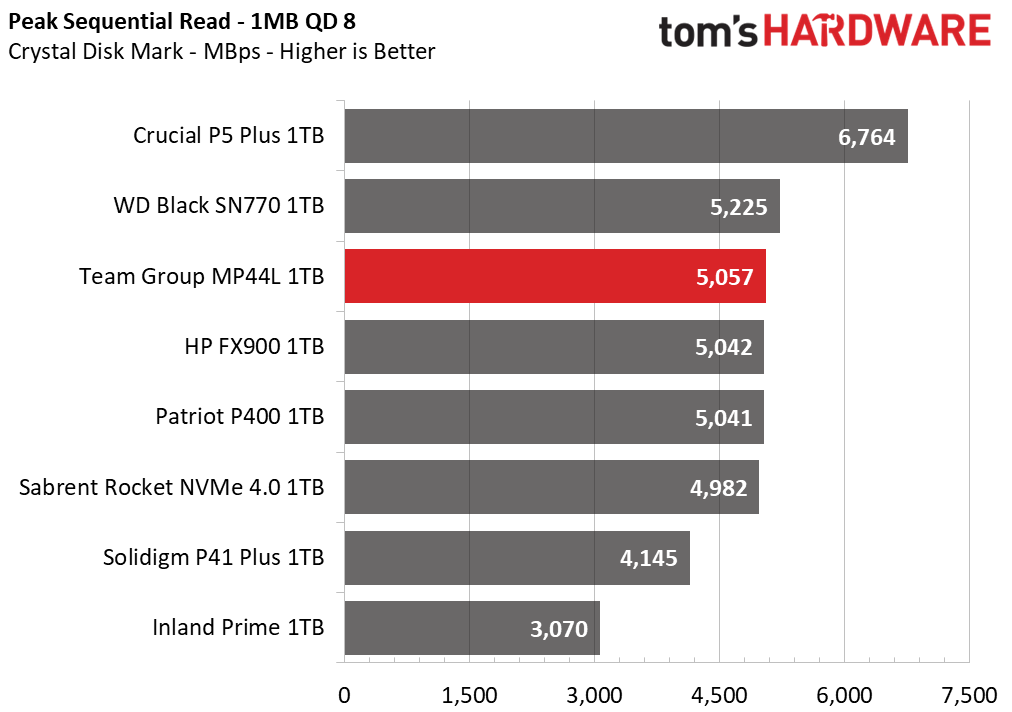
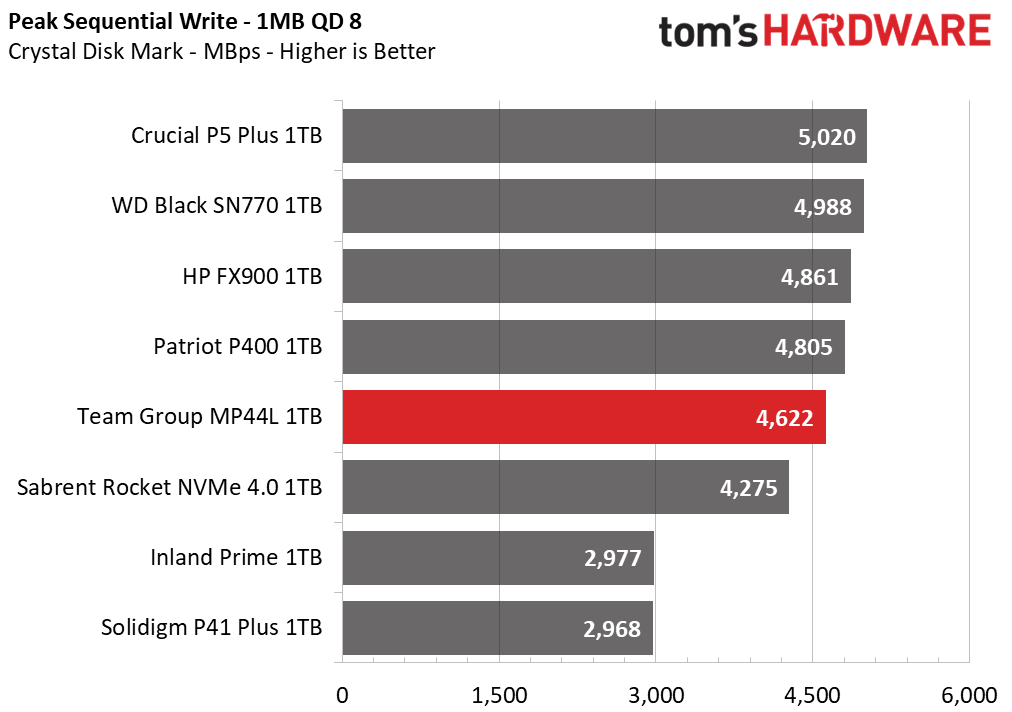
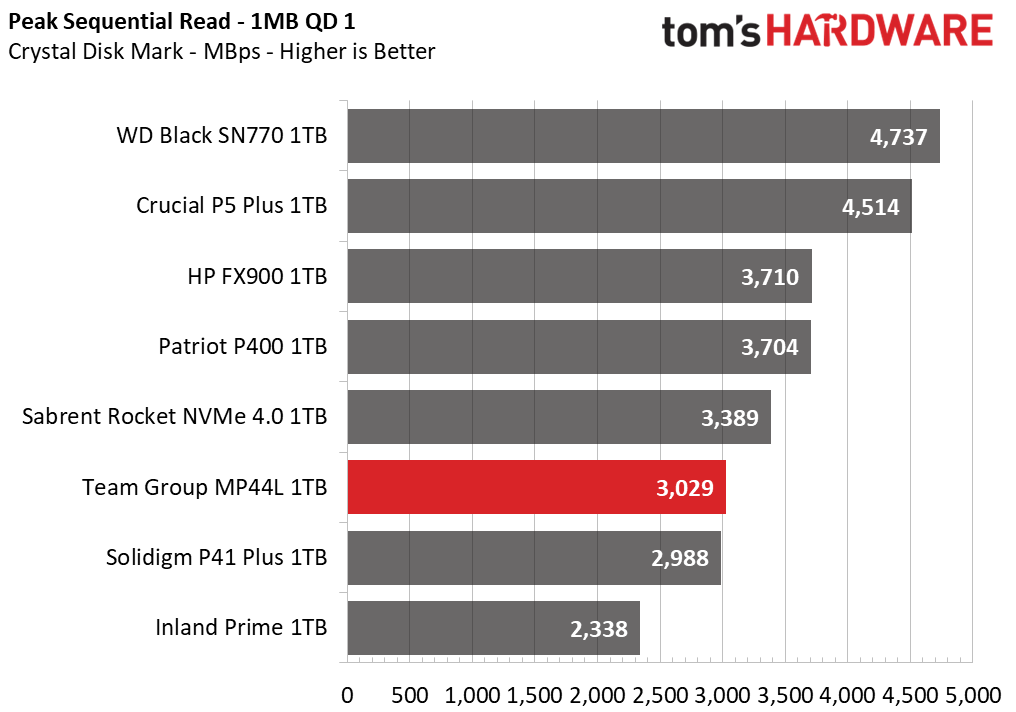
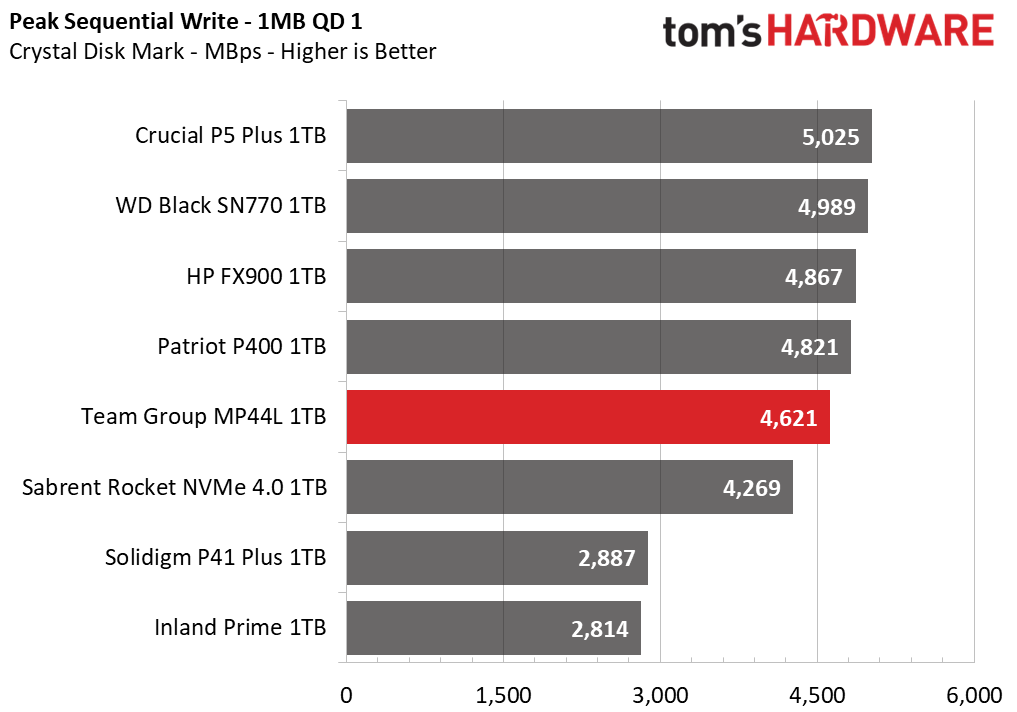
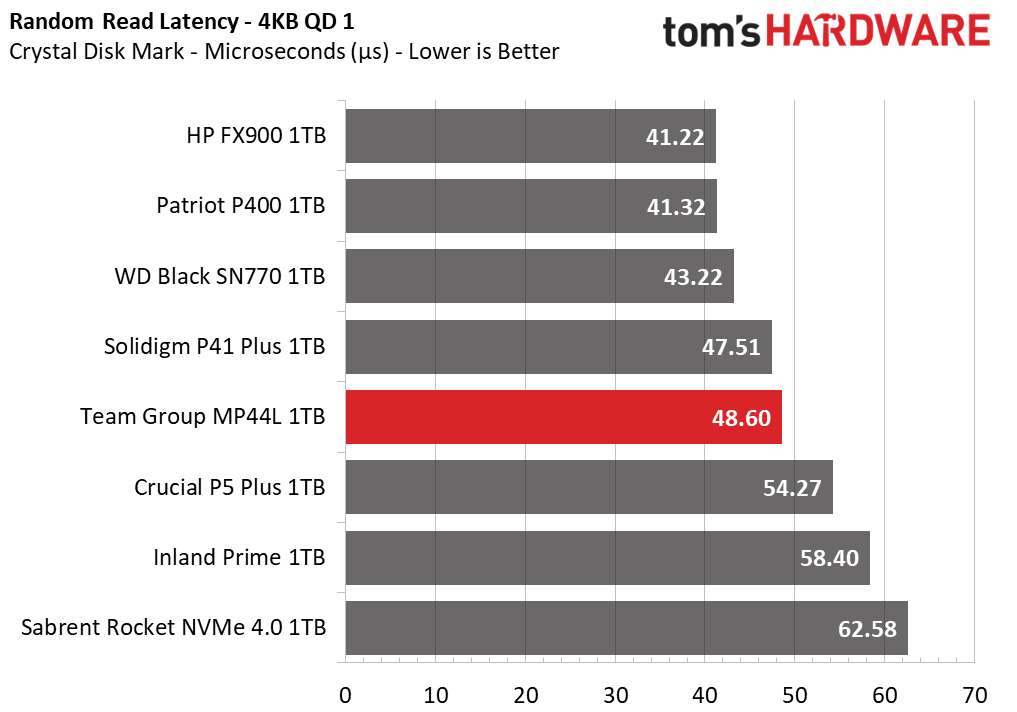
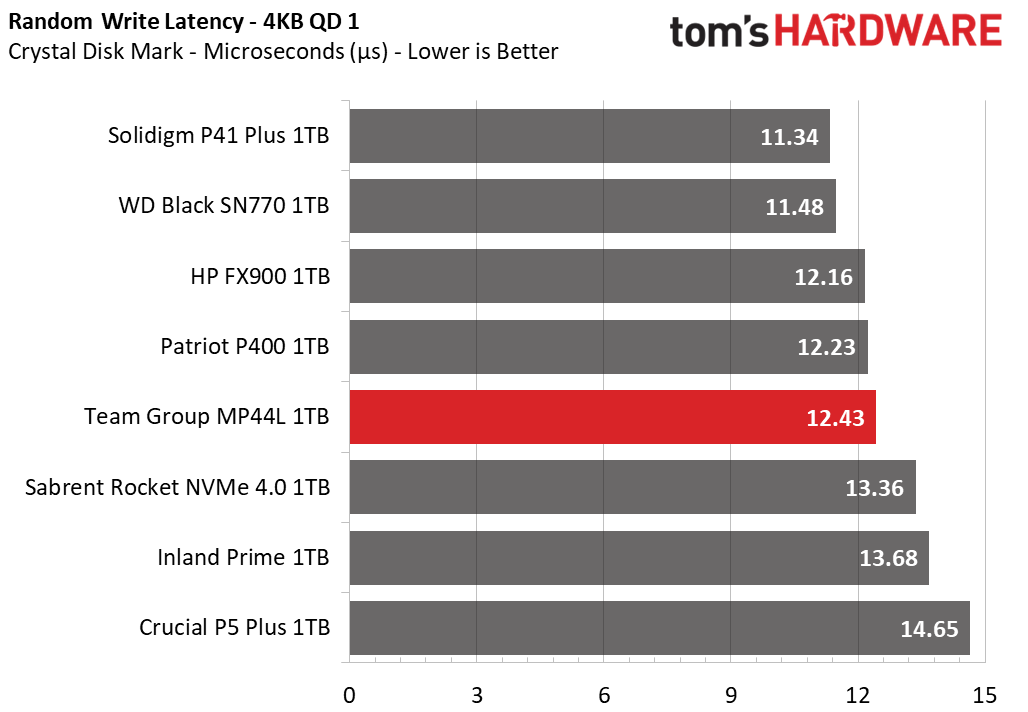
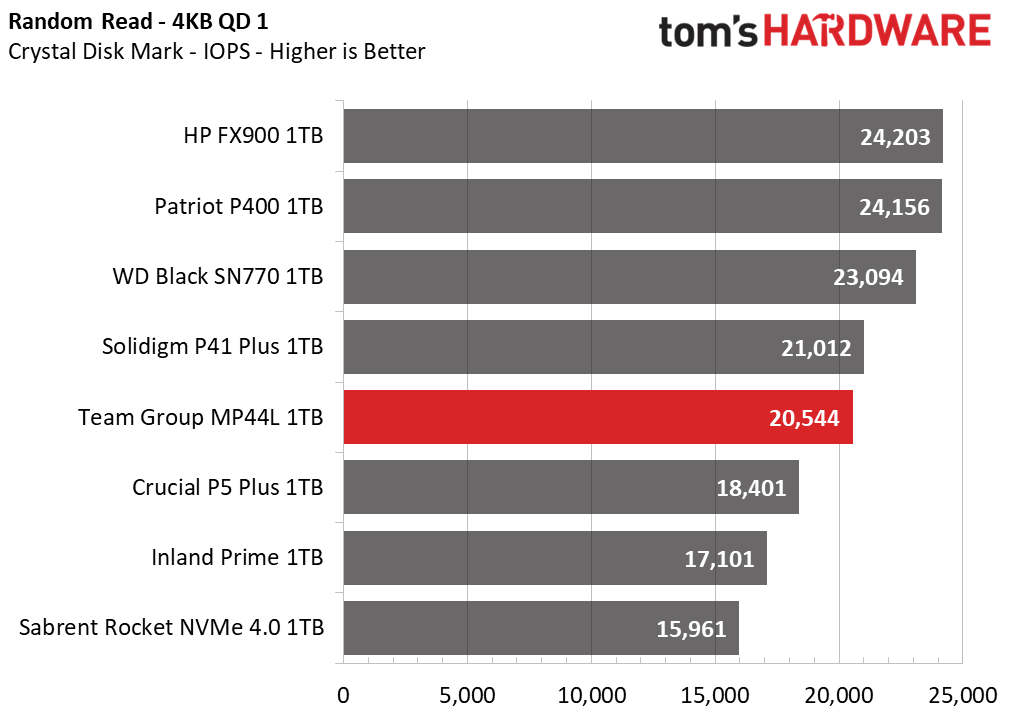

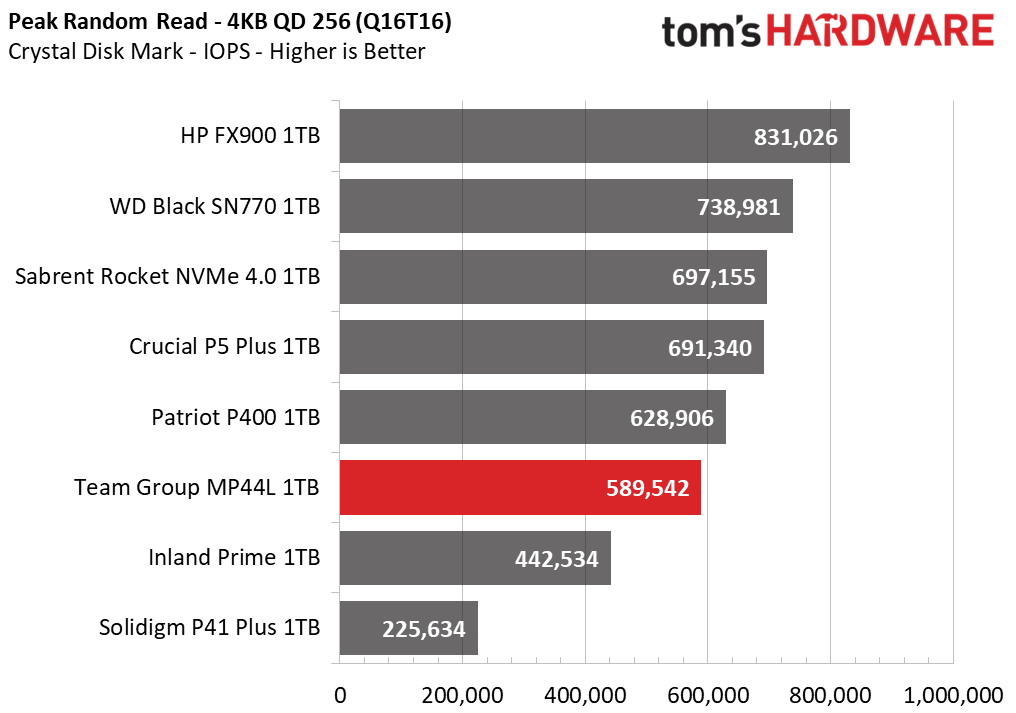
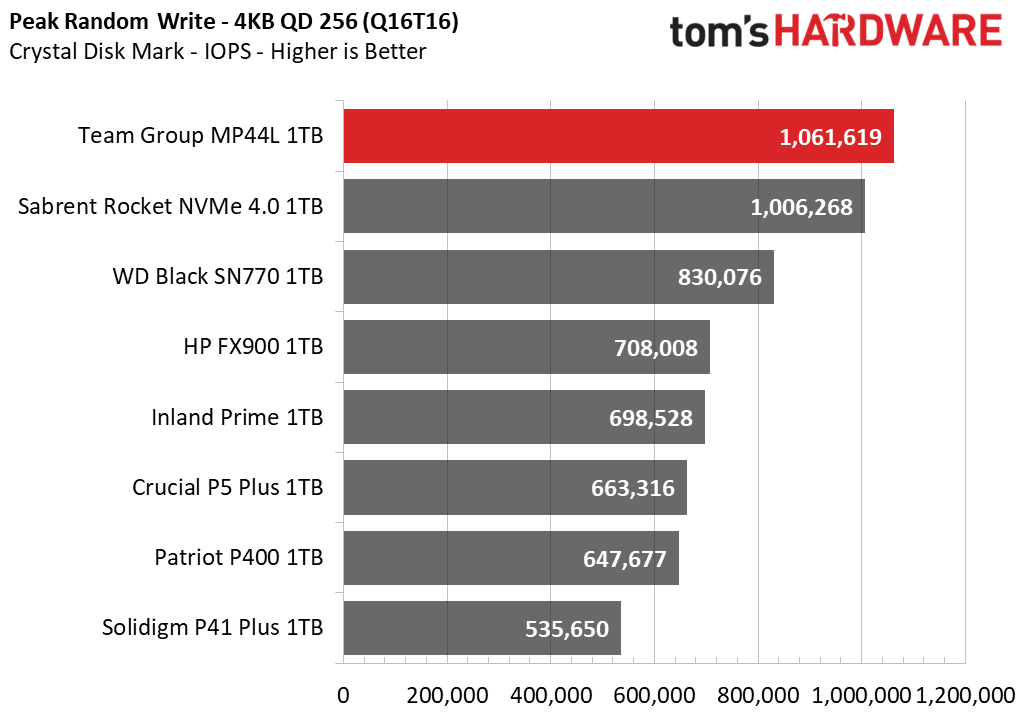
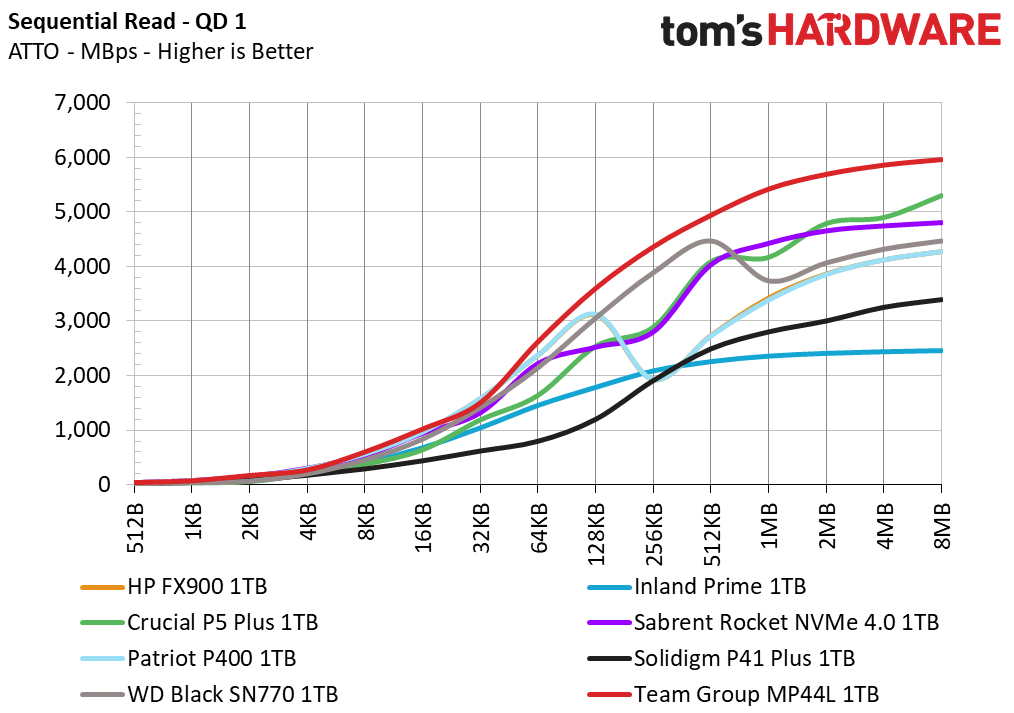
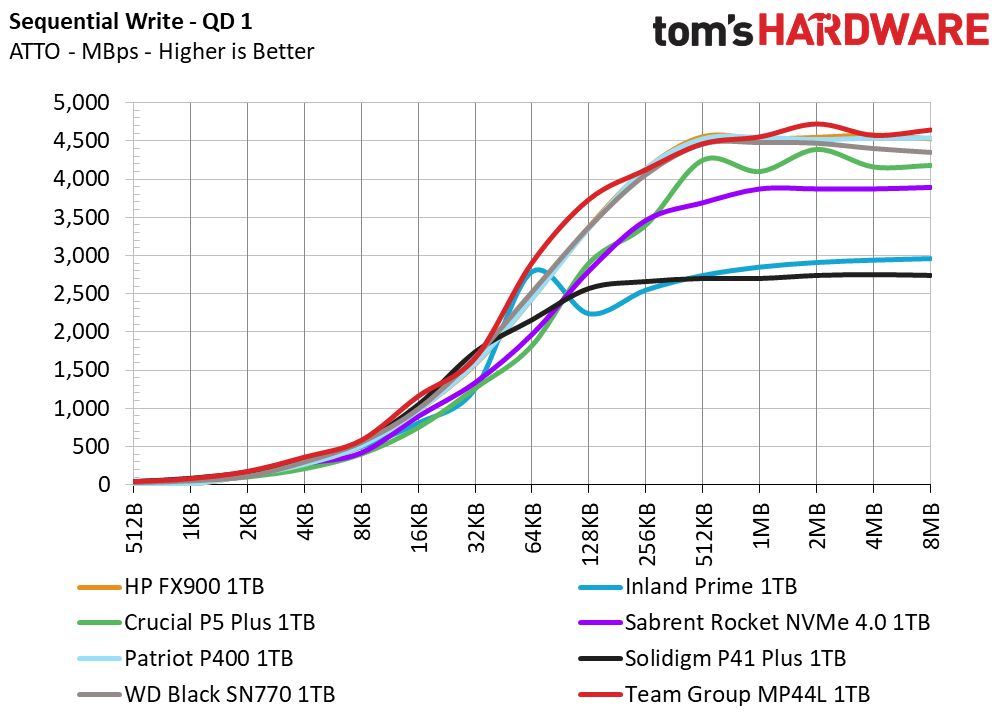
The MP44L does exceptionally well on ATTO. Phison controllers tend to do well in this test, particularly with reads at larger I/O sizes. CDM sequentials show it falling behind the P5 Plus and SN770, however; it is decidedly average at best. 4K low queue depth results are better but not quite capable of matching the best. Specifically, the SN770 is better across-the-board and the FX900 and P400 - using the IG5220 controller - are better with all-important low queue depth read latency. The P41 Plus continues to surprise, considering it’s using QLC, while the DRAM-equipped Rocket NVMe 4.0 shows how old hardware can fall behind.
Sustained Write Performance and Cache Recovery
Official write specifications are only part of the performance picture. Most SSDs implement a write cache, which is a fast area of (usually) pseudo-SLC programmed flash that absorbs incoming data. Sustained write speeds can suffer tremendously once the workload spills outside of the cache and into the "native" TLC or QLC flash. We use Iometer to hammer the SSD with sequential writes for 15 minutes to measure both the size of the write cache and performance after the cache is saturated. We also monitor cache recovery via multiple idle rounds.
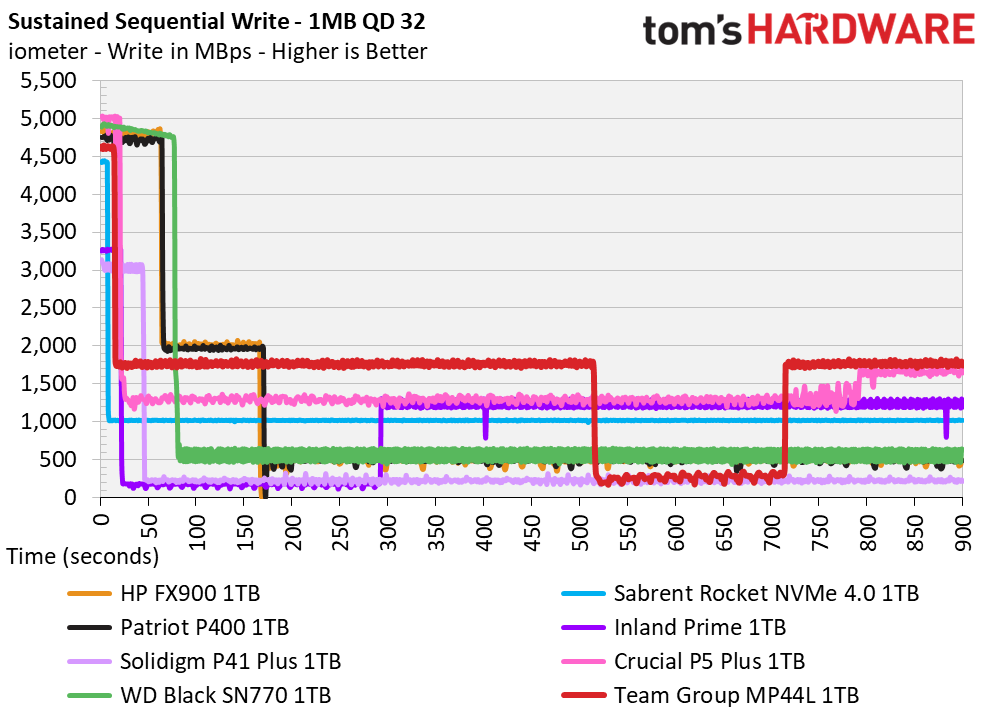
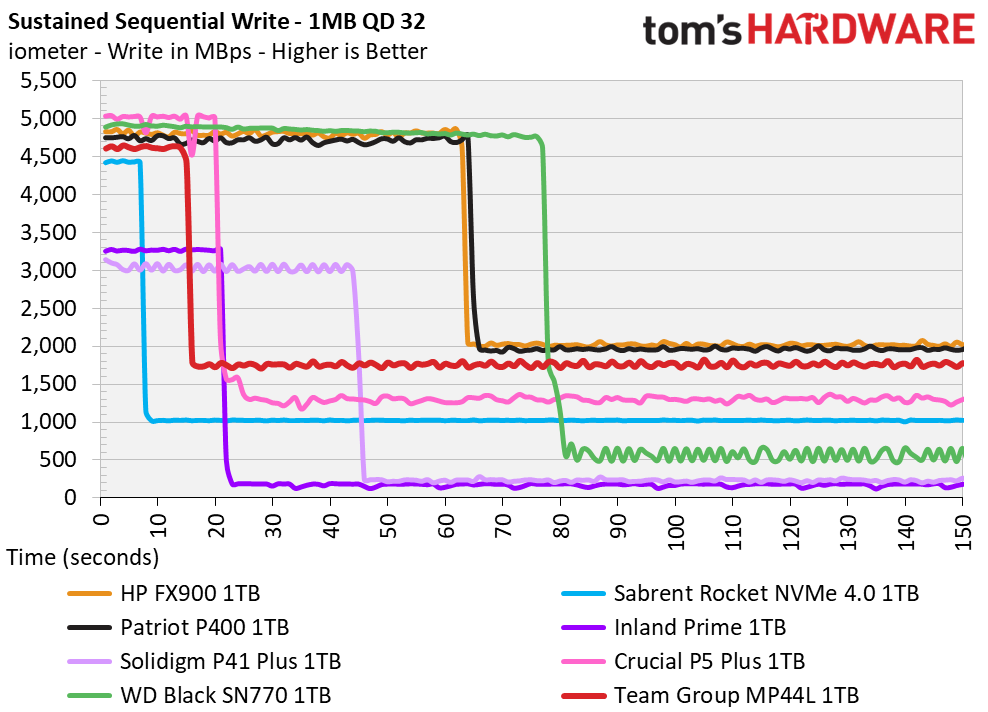
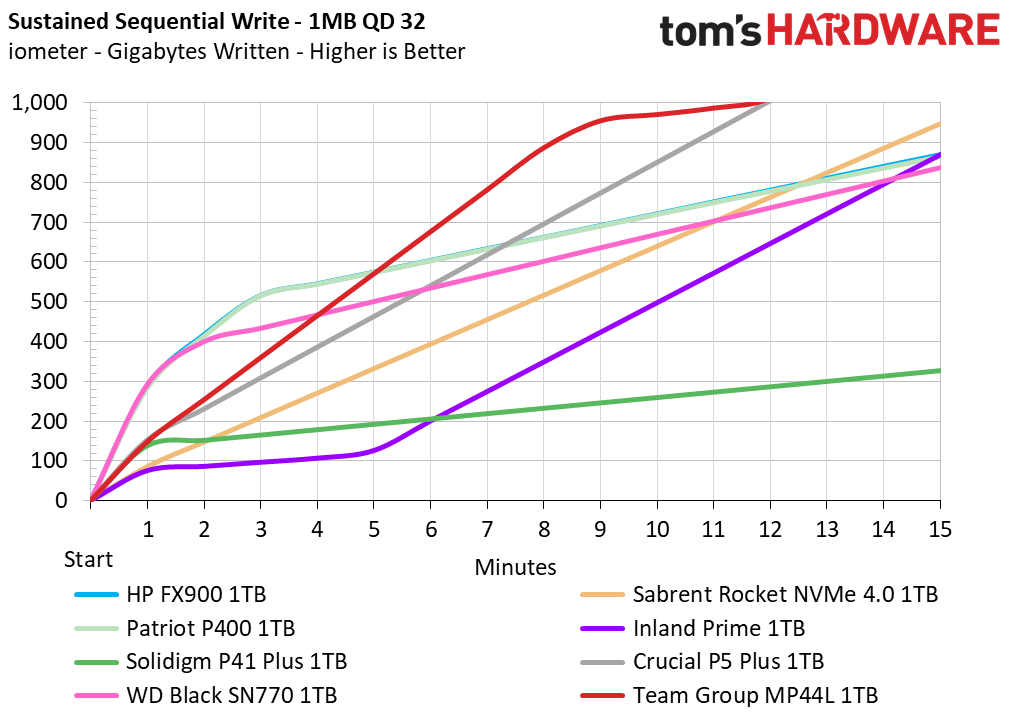
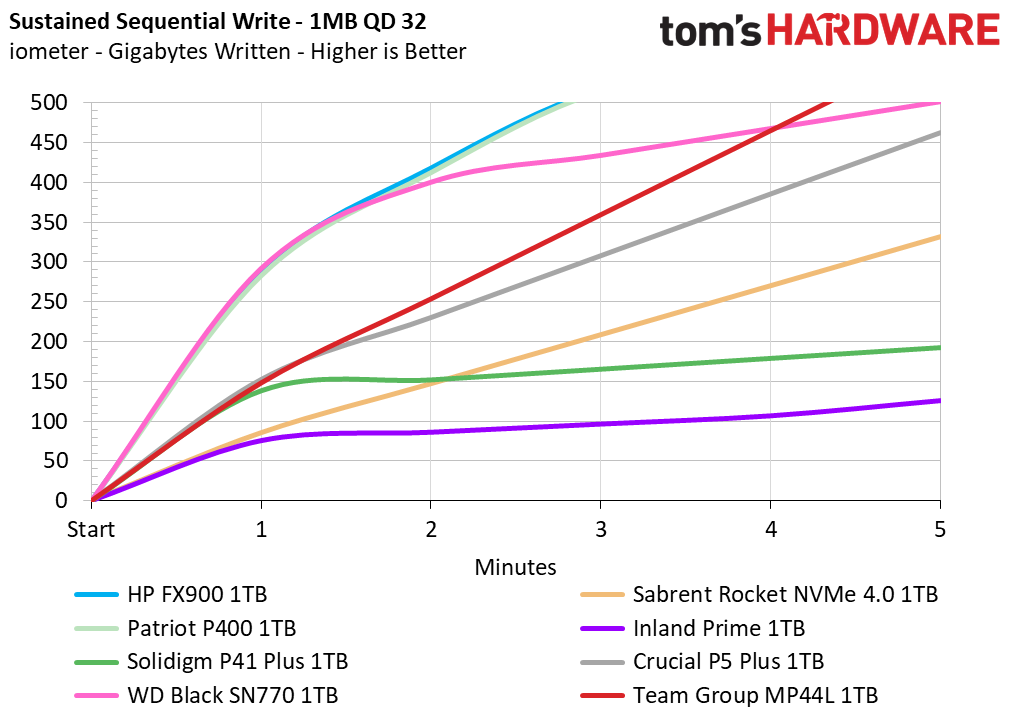
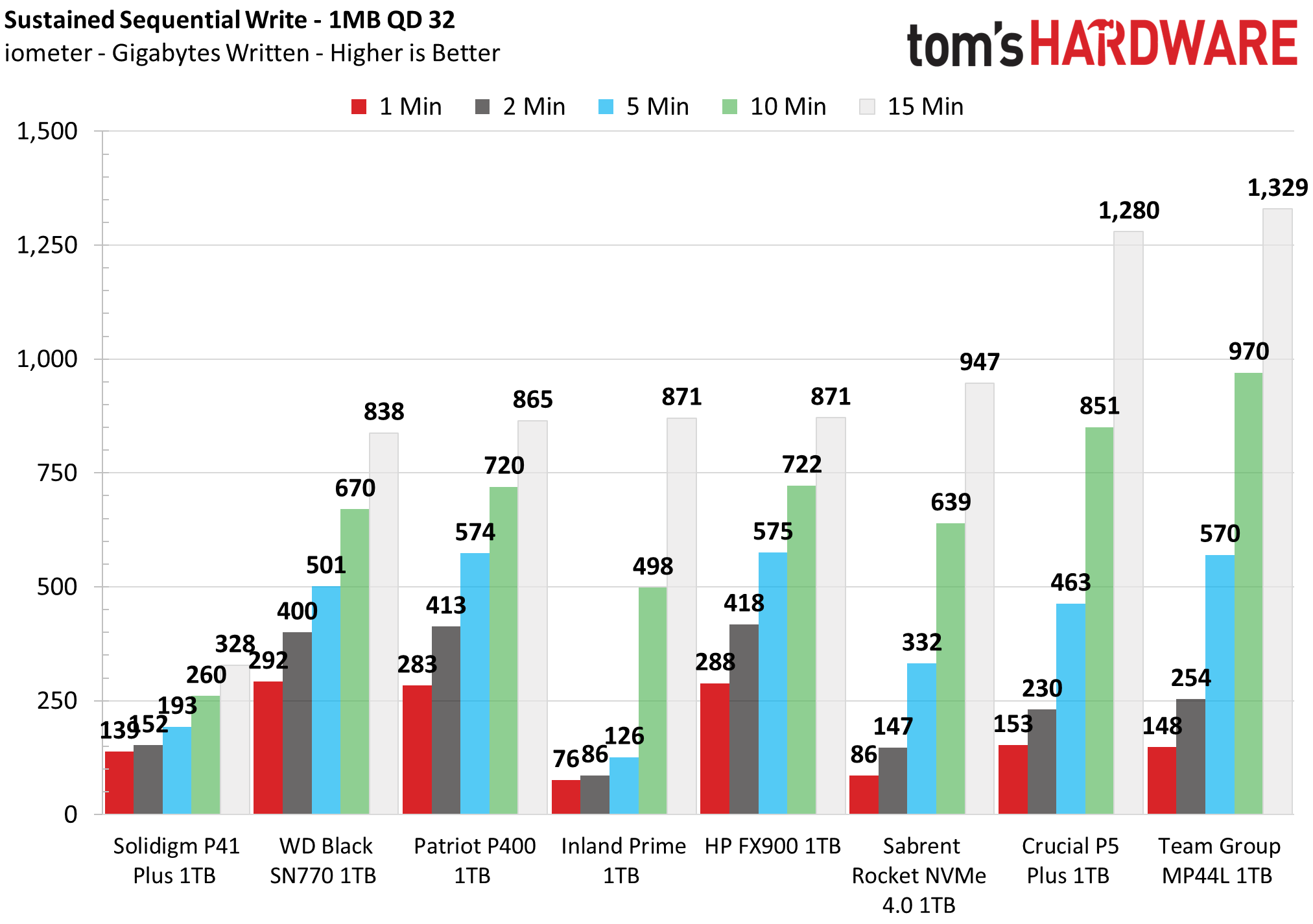
The 1TB MP44L writes in pSLC at 4.6 GBps for up to 15 seconds, with a cache size around 69GB. This is a fairly small cache, so we would expect higher sequential write performance in TLC mode. This is indeed the case as the MP44L writes at around 1.75 GBps after the cache is exhausted. The E21T controller has a limited amount of channels and die interleaving so eventually the drive must fold to around 250 MBps.
Although the pSLC cache will vary with how full the drive is, having a smaller cache means being able to retain a similar absolute size with space utilization. A certain amount of cache for a 1TB drive is sufficient to cache small, random writes as well as writes in bursts, which is ample to maintain high performance and make the best use of the pSLC for endurance purposes. The relatively high and elongated TLC performance phase suggests additional consistency that should be present even if the drive is very full. Typically budget drives have leaned on larger pSLC caches to hide their poor native performance, but this controller and flash combination is fast enough to offer an excellent experience without compromise.
The most direct comparison would be to the FX900 and P400, which are using the IG5220 controller instead. The pSLC cache design for those drives emphasizes a much larger cache and much shorter intermediate performance period, although all of these drives seem to take a bit of time to recover their cache when idle. Recovery time varies because there are good reasons to defer clearing the pSLC, such as avoiding additional wear, while having it ready again means better performance. Therefore there is a balance to be struck, but DRAM-less drives with good TLC performance generally opt to be conservative, particularly as consumer usage on a budget drive tends to demonstrate lots of idle time.
Power Consumption and Temperature
We use the Quarch HD Programmable Power Module to gain a deeper understanding of power characteristics. Idle power consumption is an important aspect to consider, especially if you're looking for a laptop upgrade as even the best ultrabooks can have mediocre storage.
Some SSDs can consume watts of power at idle while better-suited ones sip just milliwatts. Average workload power consumption and max consumption are two other aspects of power consumption, but performance-per-watt is more important. A drive might consume more power during any given workload, but accomplishing a task faster allows the drive to drop into an idle state more quickly, ultimately saving energy.
We also monitor the drive’s temperature via the S.M.A.R.T. data and an IR thermometer to see when (or if) thermal throttling kicks in and how it impacts performance. Remember that results will vary based on the workload and ambient air temperature.
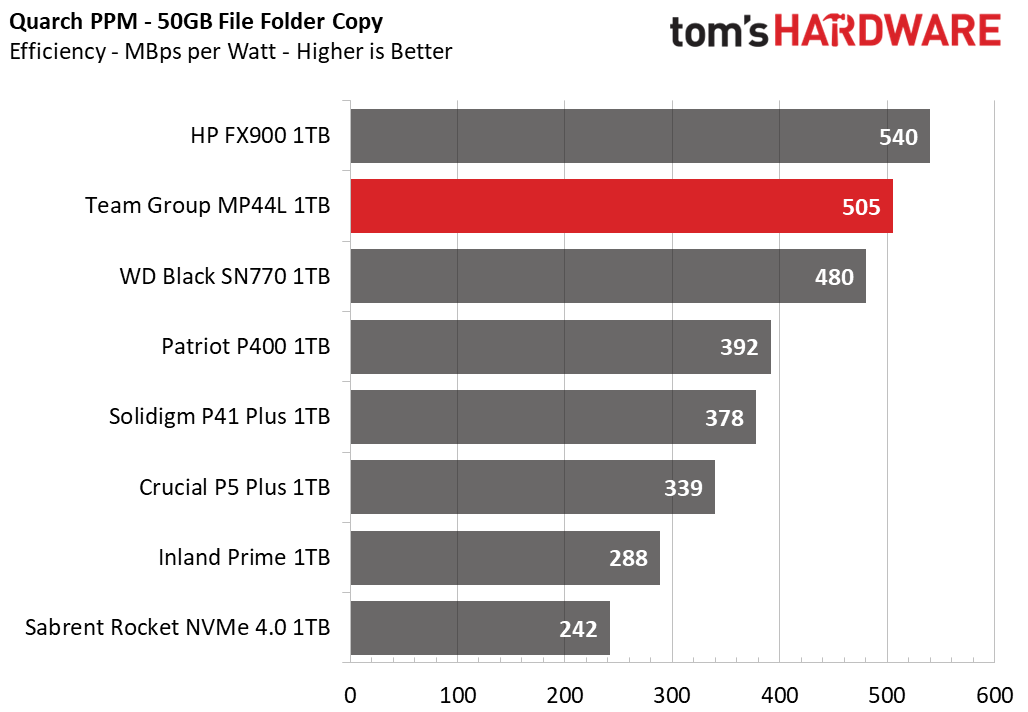
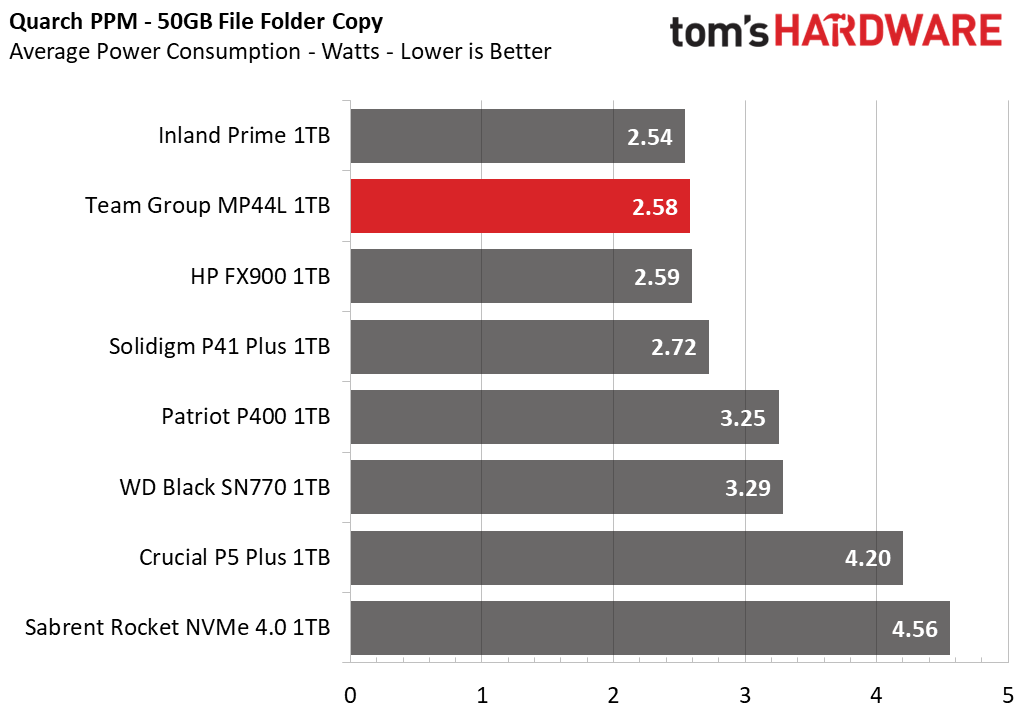
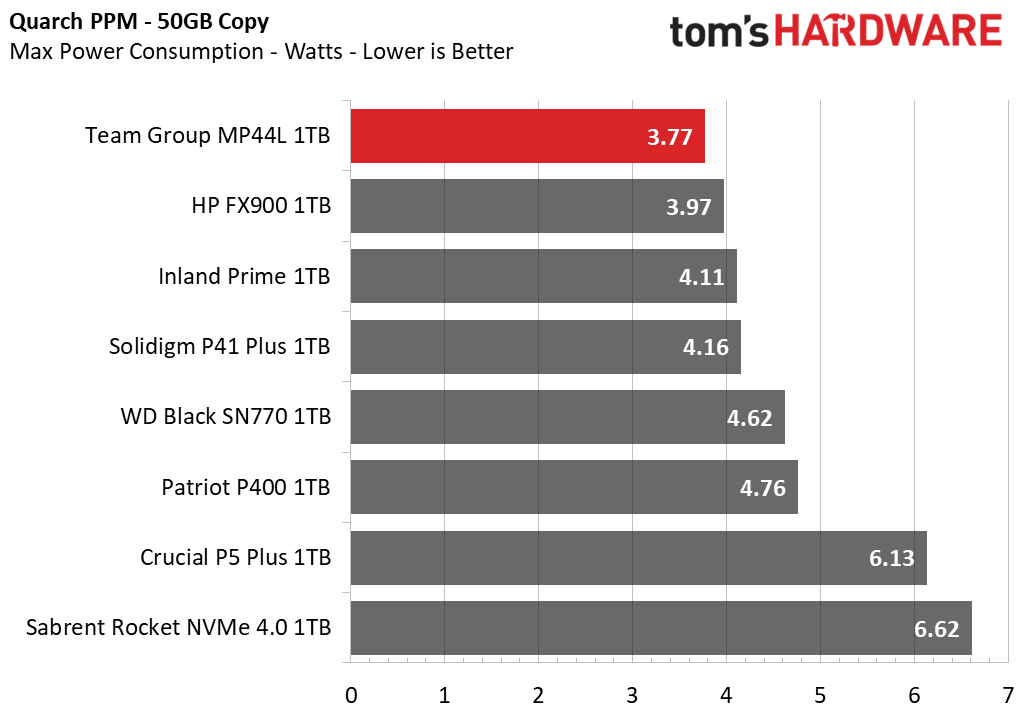
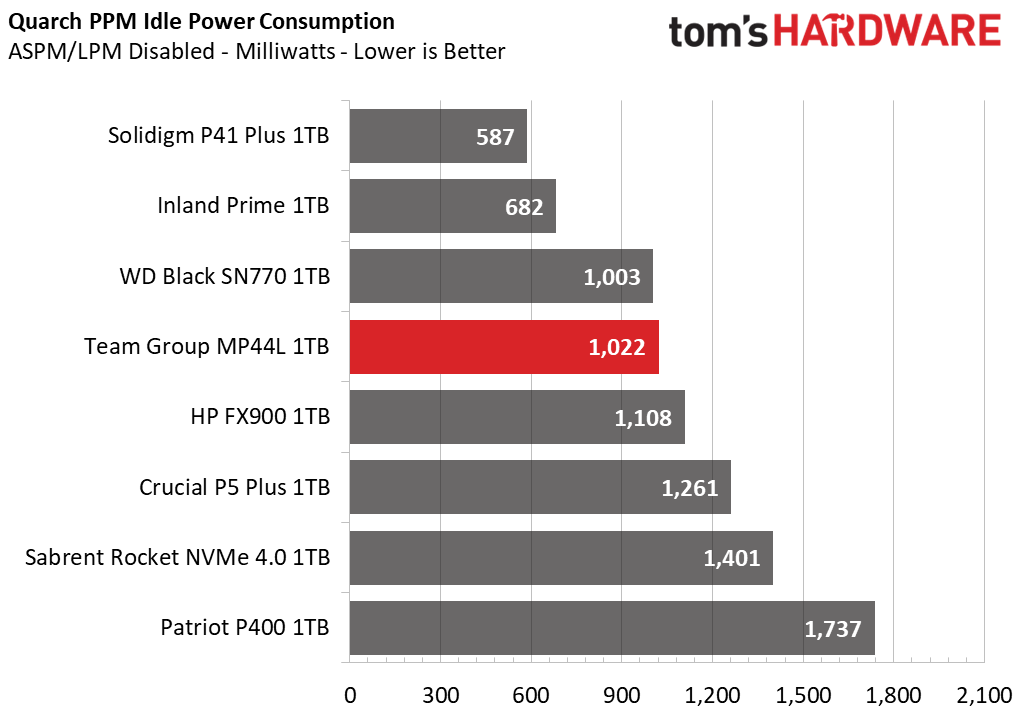
High power efficiency has been one of the most obvious benefits of newer controller and flash technology. Budget drives in particular have been impressive, for example with the FX900 and SN770. The MP44L falls in-between these two drives with very high efficiency. A DRAM-less, 4-channel controller is bound to be more efficient and makes for an excellent drive choice for a laptop, especially with a single-sided design. With very light usage something like the P41 Plus might be the better choice - given that it should be cheaper - but the MP44L would be superior if you intend to do a bit more.
We measured the MP44L at 41C during idle with a maximum temperature of 77C under load. This temperature was reached by writing for over one-half of the 1TB drive’s capacity. At that point it hit a folding state which precluded throttling - no heatsink is required under normal conditions.
Test Bench and Testing Notes
| CPU | Intel Core i9-12900K |
| Motherboard | ASUS ROG Maximus Z690 Formula |
| Memory | 2x16GB Corsair Dominator DDR5 5600 CL36 |
| Graphics | Intel Iris Xe UHD Graphics 770 |
| CPU Cooling | Arctic Liquid Freezer II - 420 |
| Case | Streacom BC1 Open Benchtable |
| Power Supply | Corsair SF750 Platinum |
| OS Storage | Sabrent Rocket 4 Plus 2TB |
| Operating System | Windows 11 Pro |
We use an Alder Lake platform with most background applications such as indexing, windows updates, and anti-virus disabled in the OS to reduce run-to-run variability. Each SSD is prefilled to 50% capacity and tested as a secondary device. Unless noted, we use active cooling for all SSDs.
Conclusion
The Team MP44L is a solid all-around budget PCIe 4.0 SSD with generally above average performance, good power efficiency, and a simple but effective design. Team backs it with a reasonable warranty and basic software support. There’s not much more to ask for in a drive, especially as this would work well in a laptop or possibly a PlayStation 5. These results are not surprising as we found the Silicon Power UD90, which has the same hardware, to be perhaps the best budget SSD available at the time of its review.
The MP44L scores a bit worse, but there are good reasons for that. The UD90 tends to offer the same package at a bit lower cost. Other drives within this range also offer a similar experience for the same price or less. The SSD market continues to trend downwards with pricing and significant sales have made for a competitive environment. There are also new competitors for the MP44L that the UD90 didn’t face at its time of review, for example the Solidigm P41 Plus. QLC is best at 1TB or 2TB which still leaves the MP44L a compelling 500GB choice, but the MP44L’s performance is good enough to make it a better all-around choice at 1TB as well.
We scored the P41 Plus rather harshly in part due to its MSRP because a QLC SSD, especially a DRAM-less QLC one, really should be cheaper. That drive has since had excellent pricing at 2TB and we would recommend it there. A drive like the MP44L is superior at lower capacities, especially if pricing is close. This is partly because benchmarks often show performance in ideal conditions, an especially valid criticism as the P41 Plus is best when it is less than 50% full. Taking this into consideration, the performance consistency of the MP44L combined with its exceptional efficiency - significantly better in our testing than the P41 Plus - makes it an objectively better choice in the general case, and worthy of a higher score.
MORE: Best SSDs
MORE: Best External SSDs and Hard Drives
MORE: How We Test HDDs And SSDs
MORE: All SSD Content

Shane Downing is a Freelance Reviewer for Tom’s Hardware US, covering consumer storage hardware.
-
PlaneInTheSky ReplyThe Team Group, or just Team, has put out a crazy amount of drives in the last few years. It’s no mystery that many manufacturers are swapping hardware and some of Team’s low-end SATA drives have been spotted with multiple controllers and flash.
How do these Taiwanese manufacturers actually get away with these shady practices.
When they ship their products to the West, they need to have an assigned identifier.
Using the same identifier for a different product, with a different controller, is not legal.
Even a book with a different cover is often assigned a different ISBN number, even though the text is the exact same. Just changing a book from hardcover to softcover involves a different identifier.
But these hardware companies can just change controllers willy-nilly and claim it's the same product?
When I read a review of an SSD, I have no way of knowing if the SSD that was reviewed, is actually the same one in the store or if it has a completely different controller.
If the laws were enforced, this wouldn't be possible. -
LastStanding ReplyNothing special, but consistent and plenty fast
That's the definition for all SSDs now.
Storage will never be considered a premium product by majority of consumers, ever!
But, these crooked suits, and some of their defenders/shills, would swear the opposite, though. Sad times that we are in, folks. -
peachpuff Reply
Just buy it!thisisaname said:Team Group MP44L SSD Review: A Budget Drive Done Right, apart from the price. -
kavun Looks like PCIe 4.0 SSDs show great gaming and OS/app performance. However, is it worth using a similar drive as a secondary disk to store media/documents or for data science?Reply
For this purpose, currently, looking for a 1TB/2TB SSD to put in a second M.2 slot in my XPS 15 (9520) - any recommendations? -
Co BIY When operating a PCIe 4.0 DRAM-less SSD on a 3.0 PCIe connection do they underperform more than expected because of the transfers required to system RAM?Reply
Does this change the recommendations for installing on a PCIe 3.0 limited system?